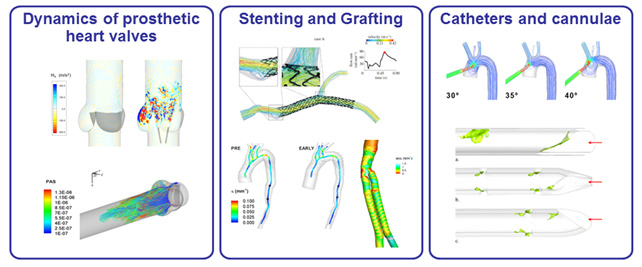Cardiovascular bioflows unit
CARDIOVASCULAR FLUID MECHANICS
This wide research field can be broken down along several complementary lines of research.
The first is the integration of medical imaging and computational modelling to elucidate the role of hemodynamic forces/structures in the origin, progression, diagnosis and treatment of cardiovascular diseases. This program can be further broken down along three lines:
- In vivo quantitative hemodynamics, which applies computational fluid dynamics algorithm to 4D cardiac MRI data;
- Image-based modelling, which exploits medical imaging data to construct patient-specific computational hemodynamics models;
- Virtual imaging, which uses computational models to simulate the impact of complex anatomy, flow and motion on medical images.

Starting from medical images, the vascular hemodynamics is reconstructed using computer-assisted image processing and computational fluid dynamic modeling techniques. Computational tools allow the investigation of local hemodynamics, providing objective, quantitative, and mechanism-based parameters to study the origin and progression of cardiovascular diseases.
The second line of research is the use of computational and experimental tools to design, optimize and characterize the performance of blood recirculating devices (prosthetic valves, stents, catheters etc.).

